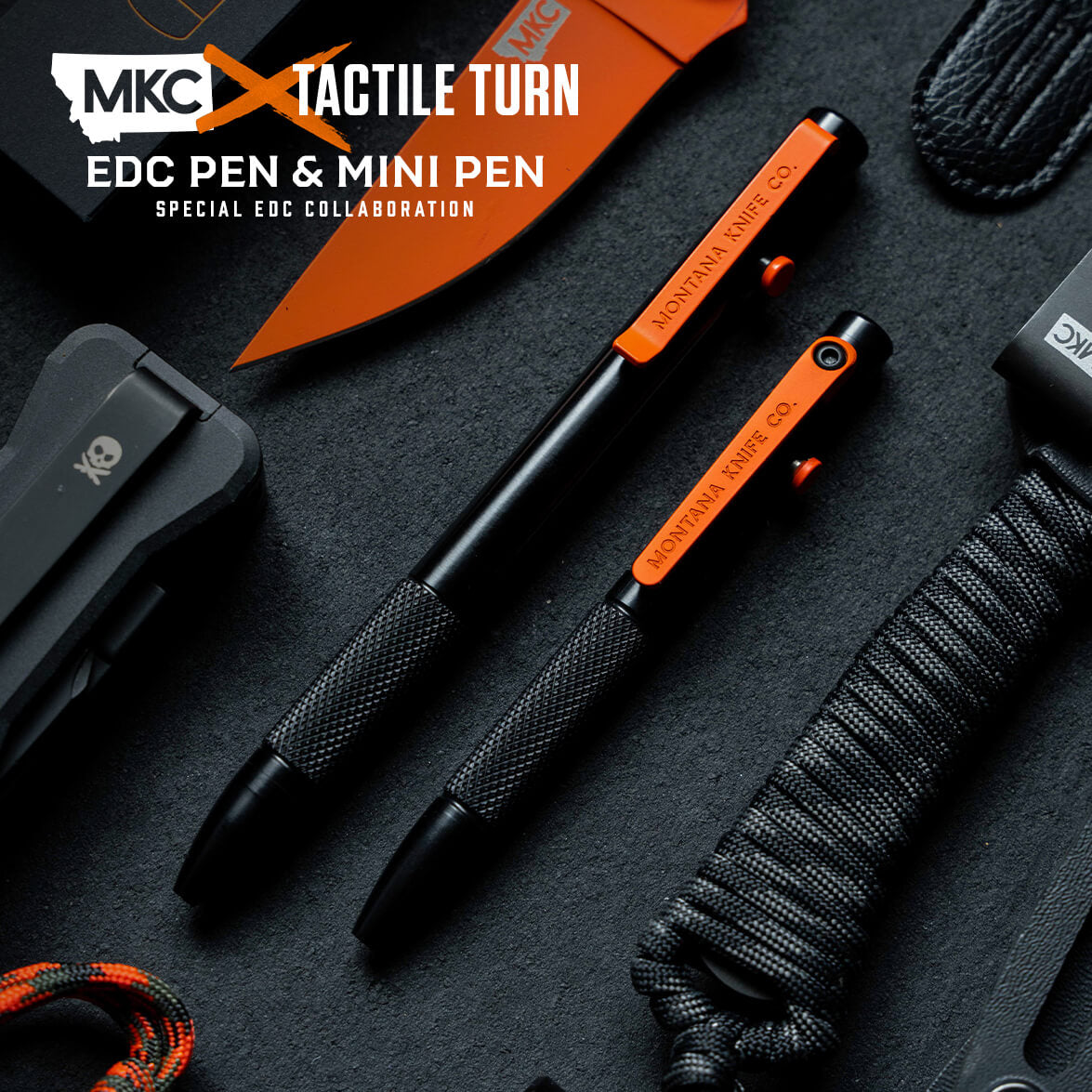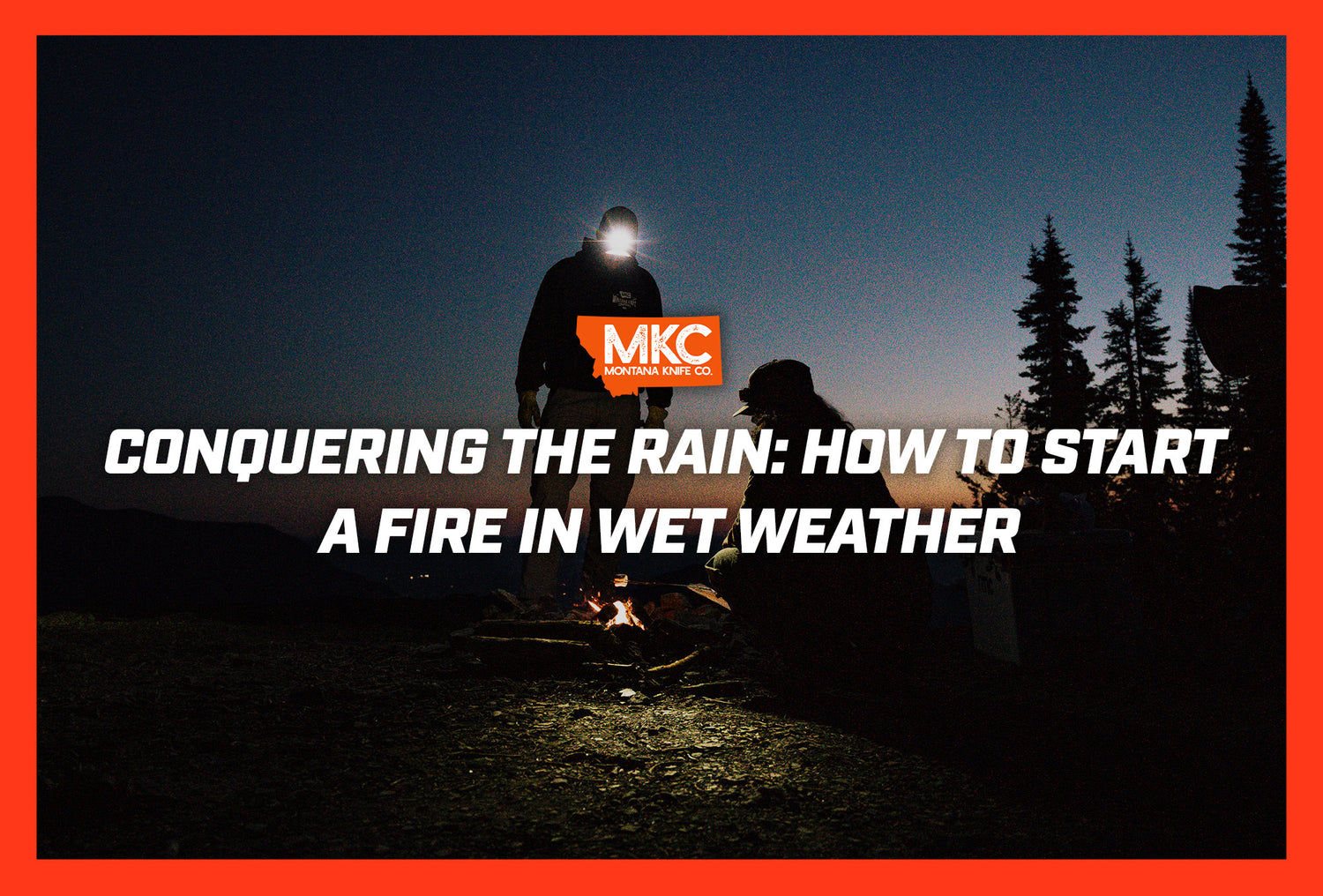As hunters, being outdoors in wet, uncomfortable weather is par for the course. Our prey animals are most active during fall and winter, when the weather is cold, damp, and unpredictable. Knowing how to start a fire with wet wood can mean the difference between a comfortable night and a miserable one.
Animals like to hunker down in inclement weather, just like we do. The key for us hunters is to be there after the weather breaks, because that’s when they move. That’s our opportunity to make the kill.
Sometimes, you need to face those winter and fall storms head-on for the best chance at that animal. You can’t do that and survive if you’re floundering with wet clothes and low temperatures.
Here’s how to start a fire in the rain.
Preparation Is Key
Most of us already know how to light a fire, but starting a fire with wet wood is a whole different ballgame. The best way to play to our strengths is to remove as many confounding variables as possible. You may not be able to bring a full set of dry logs with you, but there are plenty of things you can bring to make this easier.
Bring two reliable fire-starting methods. There’s always a chance that one could fail or get lost. Stormproof matches, a lighter, and fire steel are all good options.
Next up, bring flammable tinder. If you’re learning how to make a fire when everything is wet, starting with your own dry, flammable material is a huge help. Man-made materials like fire putty and wet fire effectively kick-start stubborn fires in damp conditions, as do wood shavings and laundry lint.
Always keep your fire-starting materials in a waterproof bag or container. If your materials do get wet, natural fire starters like pine sap can help in a pinch, too.
Finally, bring a blade, hatchet, or lightweight folding saw (I like the Gomboy Curve from Silky) to process wood. Cutting branches and logs into smaller pieces helps them burn and dry faster.
How to Find Dry Wood in Wet Conditions
The secret to starting a fire with wet wood is usually (surprise) to use dry wood instead.
Instead of grabbing the first tinder you find, look around for something dry. Keep an eye out for standing dead wood. If it’s off the ground, it’s much more likely to be dry.
The lower branches of live conifer trees are often dead and dry, too. These trees are full of flammable sap that helps them burn hot.
You can test wood and twigs for dryness by breaking them in half. If they make a loud, clean snap, they’re nice and dry. If they bend like rubber or elastic, they’re not dry enough to start a fire.

How to Start a Fire in Rainy Weather
If you can, look for dry wood well before you build your fire — ideally, as soon as you arrive at your campsite. This reduces the chance of rain ruining your best lumber sources later.
Collect an armload of finger-sized sticks (No. 2 pencil thickness) and another armload of forearm-sized sticks. They should all be as dry as possible. Process larger sticks and logs down to the correct sizes if you can’t find enough.
Next, create a dry area for your fire. Just like wet firewood, wet dirt can keep a fire from starting. A few sticks laid side-by-side or a large piece of bark can both work to create a dry barrier.
As far as fire styles go, everyone has their favorite. We like teepee-style fires because they help keep your fire off the wet ground. Log-cabin-style fires work well for this, too.
Once you ignite your dry kindling, start adding your finger-sized sticks. Be careful not to smother your growing fire. Once the finger-sized sticks are burning, repeat the process with the forearm-sized sticks. From there, it’s a matter of maintaining the fire.
How to Keep Your Fire Going in Wet Conditions
Now you know how to start a fire in the rain, but how do you keep it going? It’s all about making sure it has plenty of oxygen and plenty of fuel — enough that a little rain won’t hurt it.
The log cabin style, mentioned above, helps draw in a lot of oxygen. Space between your sticks is key; lots of space means lots of airflow.
The other key is to keep your fire fueled. Don’t let it burn down too far. If your fire gets low or burns out, it’s much more difficult to get things going again in damp conditions.
Finally, avoid putting wet wood directly on the fire, no matter how tempting. Even a powerful fire can die with enough wet wood.
Instead, split your wet logs and stack them in a ring around your fire. If you’ve ever wanted to know how to dry out wet firewood fast, this is the answer. The heat from the nearby fire helps the wet logs release moisture, and if you arrange them right, they can block wind, too.

How to Light Firewood in the Rain: Final Thoughts
Having a fire while hunting isn’t just convenient — it affects your personal safety. The skills and knowledge to build a fire in damp conditions will serve you well and keep you warm and dry(er) on all your future hunts.
Did these tips answer your questions about how to start a fire with wet wood, or with dry wood in the rain?






































